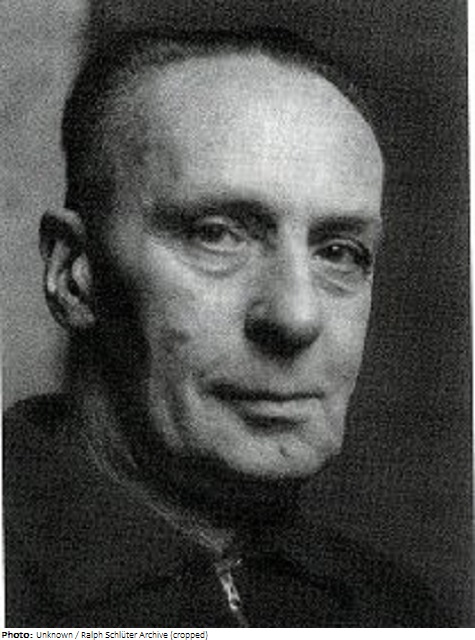Edwin Grienauer

Biographical information
| Roles | Competed in Olympic Games • Competed in Olympic Games (non-medal events) |
|---|---|
| Sex | Male |
| Full name | Edwin Karl Hugo•Grienauer |
| Used name | Edwin•Grienauer |
| Born | 7 March 1893 in Wien (Vienna), Wien (AUT) |
| Died | 21 August 1964 (aged 71 years 5 months 14 days) in Wien (Vienna), Wien (AUT) |
| NOC |  Austria Austria |
| Medals | OG |
| Gold | 1 |
| Silver | 0 |
| Bronze | 1 |
| Total | 2 |
Biography
Austrian Edwin Grienauer was the son of cellist Karl Grienauer (1868-1915) and opera singer Helene Schott (1871-1910) but grew up temporarily in an orphanage. After an apprenticeship he studied at the School of Applied Arts in Wien (Vienna). From 1912 he worked as a freelancer, but from 1920-33 he was a member of the Künstlerhaus. He was known primarily for his design of official Austrian and Liechtenstein coins. He was also an outstanding rower, winning the 1927 Austrian Championships in double sculls. He created large sculptures, busts, medals and coins, was awarded the title of an honorary professor in 1935 and taught from 1945 at the Academy of Fine Arts in Wien. His large-scale sculptures and architectural decorations can be found particularly in the Wien area. Grienauer also created numerous medals and plaques on sports topics, including the 50 Schilling coin on the occasion of the Olympic Winter Games in Innsbruck 1964.
In 1928 Grienauer submitted four medals to the art competitions in the category Medals and Reliefs, one of them winning the gold medal. Two of the medals were created for a concrete reason. One medal was created for the award ceremony in rowing in Wien (three-cities-eights-rowing Berlin-Vienna-Budapest) on 27 June 1927, in which Nike presents three athletes an olive branch. Another medal 60th anniversary was also dedicated to the rowing club Donauhort (1927). In the background, a coxed eight can be seen, and in the foreground an athlete (the winner) is waving a flag. Both medals were one-sided and had a diameter of 60 mm.
The third medal showed a naked athlete and the inscription “Kunsthistorisches Museum”. It was a model of a badge for museum guides (60 x 37 mm) created in the Olympic year. The fourth medal was a work from 1926 for the Künstlerhaus. It is a one-sided AE-medal with a diameter of 70 mm as an annual premium of the Medailleurs’ Association of the Cooperative of the Fine Arts in Wien titled “Dragon fight”. Grienauer’s medals were listed in the catalog under three categories, each with the neutral designation “medal”. However, four medals are shown in the Official Report. Possibly the badge, which was only created in 1928, was subsequently submitted. Whether the gold medal was awarded in 1928 for his overall presentation or only for one of the works is still unclear. In 1932 he took part with eight works and in 1948 he earned another Olympic bronze medal for his Prize Rowing Trophy.
In 1932 Grienauer submitted 8 medals in a frame with glass: Medal of the Austrian Automobile Club (1930, prize medal, one-sided, 60 mm), Eckart-Bund medal (1929, one-sided, 60 mm), Nike (pentathlon medal) (1931 for the Austrian Federation of Physical Sport, winner’s medal, 50 mm), Neptune (watersport medal) (1929, one-sided, 50 mm, 48 g), Sprinter in the final spurt (1928), European Championship Medal in Women’s Figure Skating (1929 for the International Skating Federation, prize medal, 40 mm), Badge for Certified Ski Instructor (1928, one-sided, octagonal, 40 mm), and Rowers (sports medal) (1929, one-sided, 35 mm). With the bronze medal in 1948 for his Plaque for Rowing, he was one of the very few Olympians who won more than one art medal. In the same year he also participated in the sculpture category.
In 1952 Grienauer once again exhibited a collection of bronze medals. In 1950, a medal was created with a Mercury running left on the obverse and three naked men pulling a rope to the left on the dedication side. It was awarded as a premium medal “for loyal service” by the Chamber of Commerce in Wien in large numbers over the years. The bronze medal had a diameter of 50 mm with a weight of 49 g. A one-sided pewter plaque showed a torch runner in front of the coat of arms of the City of Wien. It was awarded by the city for “For Services to Sport”. The diameter was 59.8 mm, the weight 46.2 g. However, it is impossible to prove whether these were among those issued in Helsinki.
Results
| Games | Discipline (Sport) / Event | NOC / Team | Pos | Medal | As | |
|---|---|---|---|---|---|---|
| 1928 Summer Olympics | Art Competitions |  AUT AUT |
Edwin Grienauer | |||
| Sculpturing, Medals And Reliefs, Open (Olympic) | 1 | Gold | ||||
| 1932 Summer Olympics | Art Competitions |  AUT AUT |
Edwin Grienauer | |||
| Sculpturing, Medals And Reliefs, Open (Olympic) | ||||||
| Sculpturing, Medals And Reliefs, Open (Olympic) | ||||||
| Sculpturing, Medals And Reliefs, Open (Olympic) | ||||||
| Sculpturing, Medals And Reliefs, Open (Olympic) | ||||||
| Sculpturing, Medals And Reliefs, Open (Olympic) | ||||||
| Sculpturing, Medals And Reliefs, Open (Olympic) | ||||||
| Sculpturing, Medals And Reliefs, Open (Olympic) | ||||||
| Sculpturing, Medals And Reliefs, Open (Olympic) | ||||||
| 1948 Summer Olympics | Art Competitions |  AUT AUT |
Edwin Grienauer | |||
| Sculpturing, Medals And Plaques, Open (Olympic) | 3 | Bronze | ||||
| Sculpturing, Statues, Open (Olympic) | ||||||
| 1952 Summer Olympics | Art Competitions |  AUT AUT |
Edwin Grienauer | |||
| Sculpturing, Open (Olympic (non-medal)) |